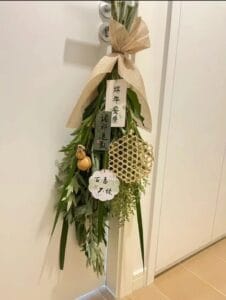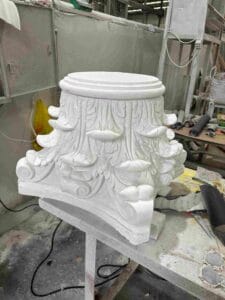
The Dragon Boat Festival, also known as Duanwu Festival (端午节), is one of the most vibrant and culturally significant traditional holidays in China. Celebrated on the 5th day of the 5th lunar month, it marks a seasonal turning point and embodies themes of patriotism, protection, and renewal.
पर एचआरएसटी स्टोन, we see in the Dragon Boat Festival a deep alignment with the enduring values we hold dear—honoring legacy, building with intention, and respecting nature’s rhythm.
What Is the Dragon Boat Festival?
The Dragon Boat Festival has a history of over 2,000 years and is widely known for its thrilling boat races, delicious sticky rice dumplings (zongzi 粽子), and deep-rooted folklore. But its origins are poetic and profound, tied to the legendary story of Qu Yuan (屈原)—a poet and minister during the Warring States period.
When Qu Yuan, a loyal statesman of the Chu Kingdom, was exiled and witnessed the decline of his nation, he ended his life in the Miluo River out of despair. The local people, mourning his death, raced out in boats to save him or recover his body, tossing zongzi into the river to distract the fish from eating him.
Thus, the Dragon Boat Festival was born—a day of remembrance, unity, and symbolic cleansing.
Main Customs of Duanwu Festival
The Duanwu Festival is rich in rituals and practices, many designed to ward off evil, ensure health, and respect tradition. These customs are regionally diverse but share common themes of vitality, family, and balance—elements that remain relevant in both personal and design philosophies today.
1. Dragon Boat Racing (赛龙舟)
The most iconic tradition is the dragon boat race, held across rivers and lakes. These long, narrow boats are adorned with colorful dragon heads, and teams of rowers compete in high-spirited races. The beating of drums and the roar of spectators create an atmosphere of unity and strength.
The races are not only a tribute to Qu Yuan but also symbolize the courage to face life’s currents head-on—a spirit mirrored in architecture and craftsmanship.
2. Eating Zongzi (吃粽子)
Zongzi are pyramid-shaped glutinous rice dumplings wrapped in bamboo or reed leaves. Filled with ingredients like sweet red beans, dates, or savory pork and egg yolk, these treats are both nourishing and symbolic.
They represent protection and offering, originally meant to shield Qu Yuan’s body from harm. Today, they are a delicious reminder of cultural connection and seasonal bounty.
3. Hanging Mugwort and Calamus (挂艾草菖蒲)
During the festival, homes are decorated with bundles of mugwort and calamus, aromatic herbs believed to ward off evil spirits and disease. These traditional natural defenses were rooted in ancient Chinese medicine.
This practice highlights a key philosophy: creating protective, health-enhancing environments, much like natural stone contributes to safe, toxin-free living spaces.
4. Wearing Five-Color Silk Threads (系五色线)
Children wear braided silk threads in five symbolic colors—red, yellow, blue, white, and black—to protect against disease and bad luck. The threads are often removed and thrown into rivers at the end of the day, symbolizing renewal.
This custom reflects the belief in seasonal transitions as moments of energetic cleansing—ideas we can apply in interior design through thoughtful, nature-integrated materials.


Symbolism and Deeper Meaning
The Dragon Boat Festival is more than folklore and food. It is a seasonal marker that historically coincides with:
The onset of hot, humid weather, when disease was more likely to spread,
A time of increased yang energy (阳气),
The need for spiritual and environmental purification.
In essence, Duanwu is about:
Protecting life through tradition,
Aligning with seasonal changes,
Commemorating loyalty, sacrifice, and moral integrity.
These themes echo not just in rituals, but also in how we build, restore, and live.
Parallels Between Duanwu and Stone

While not a traditional part of the Duanwu Festival, natural stone resonates with many of its values:
● Endurance and Legacy
Just as Qu Yuan’s story has endured for millennia, stone symbolizes timelessness—used for temples, bridges, and homes that still stand today. Like the festival, stone tells stories of resilience and identity.
● Health and Safety
Natural stone surfaces are often hypoallergenic, non-toxic, and cooling, making them ideal during summer heat and humidity—conditions emphasized during Duanwu. Stone finishes can contribute to cleaner, more harmonious indoor environments, much like mugwort does symbolically.
● Cultural Integration in Design
Modern architects and designers are increasingly integrating Chinese cultural references into their spaces—be it through stone carvings, textures, or motifs that reflect historical patterns like waves (symbolizing water), dragons, or traditional calligraphy.
पर एचआरएसटी स्टोन, we support projects that thoughtfully blend heritage with modern functionality. The spirit of Duanwu—balance, memory, and mindfulness—can inspire new forms of design expression using quartzite, marble, and granite.
Global Relevance: Why Duanwu Matters Beyond China

While the Dragon Boat Festival is uniquely Chinese, its core principles are universal:
Honoring the past to build a better future,
Strengthening communal bonds through shared tradition,
Respecting seasonal rhythms and natural balance.
As design trends shift toward biophilic environments और cultural storytelling, global homeowners and designers can draw inspiration from Duanwu’s messages of protection, transformation, and harmony with nature.
Conclusion: Celebrating Life, Legacy, and Nature’s Power
The Dragon Boat Festival is a powerful reminder that traditions keep us grounded, even as the world evolves. Its rituals connect people to nature, to each other, and to a history of courage and renewal.
पर एचआरएसटी स्टोन, we believe that every material we supply—whether for homes, public spaces, or landscape features—should do the same. Natural stone, like culture, is enduring. It transforms with time, holds deep meaning, and becomes more beautiful as it ages.
As we honor this vibrant festival, we also embrace its energy: moving forward while remembering where we come from.
📧 Contact us for project consultations and custom stone solutions: star@hrststone.com
🌐 Learn more at www.quartzite-stone.com




